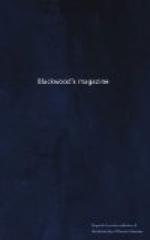“Some of them are much larger than small salmon; but by the term grilse I mean young salmon that have only been once to sea. They are easily distinguished from salmon by their countenance, and less plump appearance, and particularly by the diminished size of the part of the body next the tail, which also is more forked than that of the salmon. They remain in fresh water all the autumn and winter, and spawn at the same time with the salmon. They return also to sea in spring with the salmon. It seems worthy of remark, that salmon are oftentimes smaller than moderate-sized grilse; but, although such grilse have been only once to sea, yet the period they have remained there must have exceeded the two short visits made by the small salmon, and hence their superiority of size. When these fish return to the river from their second visit to the sea, they are called salmon, and are greatly altered in their shape and appearance; the body is more full, and the tail less forked, and their countenance assumes a different aspect.”—P. 37.
We are glad to observe that in these opinions regarding the growth of grilse and salmon, our author conforms with, and consequently confirms, the ingenious and accurate experimental observations recently completed by Mr Young of Invershin.[11]
Of all those natural causes which counteract the increase of salmon fry, and consequently of grown grilse and adult salmon, Mr Scrope considers that the “furious spates” which so frequently occur in Tweed, are the most destructive. These not only put the channel in motion, but often sweep away the spawning beds entirely. Prior to the improvements in agriculture, and the amelioration of the hill pastures by drainage, the floods were much less sudden, because the morasses and swampy grounds gave out water gradually, and thus the river took longer to rise, and continued fuller for a greater length of time than in these degenerate days, to the increased delight of every acre-less angler.
“But now every hill is scored with little rills which fall into the rivers, which suddenly become rapid torrents and swell the main river, which dashes down to the ocean with tumultuous violence. Amidst the great din you may hear the rattling of the channel stones as they are borne downwards. Banks are torn away; new deeps are hollowed out, and old ones filled up; so that great changes continually take place in the bed of the river either for the better or the worse. When we contemplate these things, we must at once acknowledge the vast importance of Mr Shaw’s experiments; for if ponds were constructed upon the Tweed at the general expense, after the model of those made by him, all these evils would be avoided. The fry might be produced in any quantities by artificial impregnation, be preserved, and turned into the great river at the proper period of migration. There might at first be some




